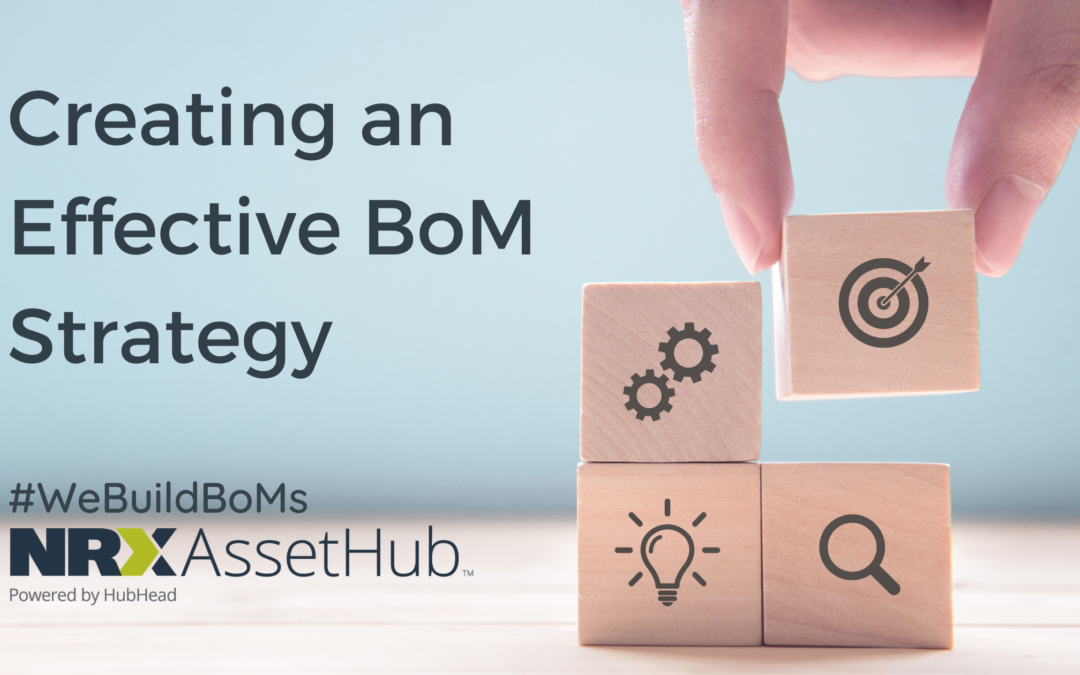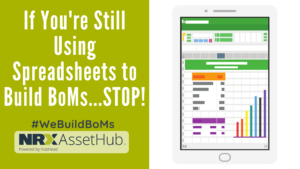Building effective bills of material is not an easy task. It becomes a shame when so much is invested into building BoMs that turn out to be ineffective and difficult to use. For some companies, their BoMs becomes so unreliable that they don’t even get used at all. What a waste of time, money, and expertise, right?
When creating BoMs, the first step is correctly identifying the equipment and defining attributes that help collect accurate vendor information. Sometimes tracking down vendor information can occupy a significant amount of time, not to mention also having to figure out what parts already exist in the system (to avoid duplicates) and filling in the gaps by adding in new parts where necessary. In addition to all that and many more in between, BoMs can quickly go out of date once created when changes are implemented in the supply chain or vendors recommend different parts. All this can make it hard to keep up and maintain the accuracy of your BoMs.
Developing an effective BoM strategy will be crucial to keeping up with your BoMs during their lifespan. As mentioned earlier, BoMs are challenging to create and maintain. Therefore, having specific strategies in place to facilitate extracting maximum value from the BoMs in your system is key.

4 important things to consider for your bills of material
- Set your priorities
If you have machinery seldom serviced, chances are the BoMs associated with that equipment are outdated. Spending time maintaining BoMs for outdated machinery is time that could be spent elsewhere, creating BoMs for serviced equipment on a more consistent basis.
- Set standards
Asset-intensive companies typically have multiple assets in different facilities, and sometimes confusion and discrepancies can occur between facilities. Setting clear data standards for your bills of material will streamline maintenance processes across all facilities. This will prevent confusion between facilities and close knowledge gaps between long-time employees and new employees.
- Maximize your ROI
Building a BoM is an expensive operation, both to build and maintain. Therefore, your BoMs should be focused on machinery regularly serviced to avoid wasting that could be better off spent elsewhere. This will preserve the return on your investment and maximize the value to be extracted from your BoMs.
- Ditch the spreadsheets and use a BoM building solution
Excel is an excellent tool for doing taxes or basic data tracking. Spreadsheets were not designed to handle the highly complex data that asset-intensive companies use. Being that excel is not a productivity tool, it will be difficult for you to ensure accuracy with your BoMs as there are little to no features to facilitate this. Investing in an effective BoM building solution will give you access to various components to ensure accurate and error-free BoMs.
The NRX AssetHub solution helps asset-intensive businesses improve their data quality before loading it into a new system. Our solutions help companies easily edit, visualize, review, and approve BoMs to optimize your new EAM system’s efficiency and effectiveness.
Building BoMs with Bad Spare Parts Data
If You’re Still Using Spreadsheets to Build BoMs … STOP!
Effects of Poor Maintenance BOMs
Share this article




